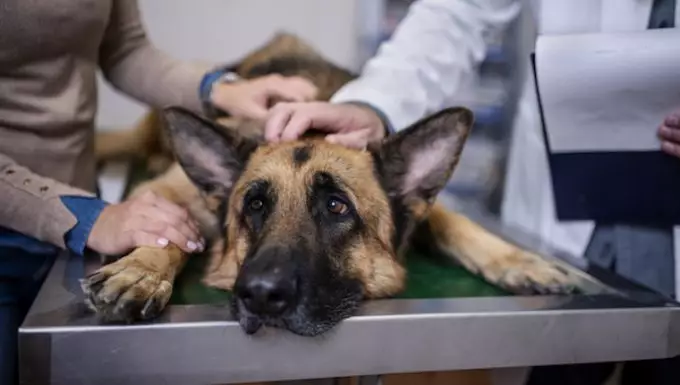Hemangiosarcoma (HSA) is a formidable foe in the canine world, representing a particularly aggressive form of cancer primarily affecting older dogs. This malignancy arises from vascular tissues, often stealthily impacting critical organs such as the spleen, heart, and skin. Unfortunately, HSA doesn’t discriminate; however, certain breeds like Boxers, Labrador Retrievers, and German Shepherds show enhanced susceptibility. As loving pet owners, it’s crucial to recognize this disease not merely as a medical term, but as a significant threat to the health and well-being of our dogs. Understanding its nature is the first step in combating this disease.
Recognizing the Symptoms: Early Detection Saves Lives
Awareness of the symptoms is pivotal in the early detection and intervention of hemangiosarcoma. Common indicators include pale gums, lethargy, sudden weight loss, and a noticeable decrease in appetite. More alarming signs may present themselves as coughing, breathing difficulties, or even episodes of collapse. These symptoms can manifest insidiously, often leading to misinterpretation as mere signs of aging or intermittent gastrointestinal issues. Therefore, vigilance is essential. If your dog exhibits any of these symptoms, prioritizing a veterinary visit is not just advisable, it is imperative. Prompt intervention can make all the difference in the successful management of this cancer.
Exploring the Causes: The Genetics Behind HSA
While the precise cause of hemangiosarcoma in dogs remains elusive, genetics plays a crucial role. The predisposition in certain breeds hints at the inherited traits that may contribute to developing this disease. Understanding the genetic background of your pet can provide insight into their health risks, enabling you to adopt proactive measures. Although the cause may often be uncertain, ongoing research into the genetic markers associated with HSA offers hope. For pet owners, being informed can empower decisions regarding care and preventative strategies.
Diagnostic Journey: Navigating the Vet’s Office
If hemangiosarcoma is suspected, the journey begins with a thorough evaluation by a veterinarian. This process involves discussing symptoms and gathering a comprehensive medical history, including any breed-related health concerns. A series of diagnostic tests follow, including blood work and imaging technologies like ultrasounds and X-rays that reveal the severity and spread of the disease. A biopsy may be recommended to obtain a definitive diagnosis. All these steps require patience and trust in the veterinary team, as they strive to pinpoint the issue accurately.
Treatment Options: Facing HSA Head-On
Once diagnosed, the fight against hemangiosarcoma continues with a range of treatment modalities. The cornerstone of treatment often involves surgical intervention to remove the tumor when possible. Complementary therapies, such as chemotherapy and radiation, may follow to manage the cancer more effectively. Additionally, managing symptoms with medications ensures your dog remains as comfortable as possible during this challenging time. Adhering to prescribed treatment regimens and creating a serene environment for recovery is vital for your dog’s healing process. Regular check-ins with the vet ensure that progress is monitored, thus adjusting treatment as necessary.
In facing hemangiosarcoma, the solidarity between pet owners and veterinary professionals is paramount. This bond can provide a support system crucial in navigating the turbulent waters of canine cancer and striving for the best quality of life for our beloved companions.

